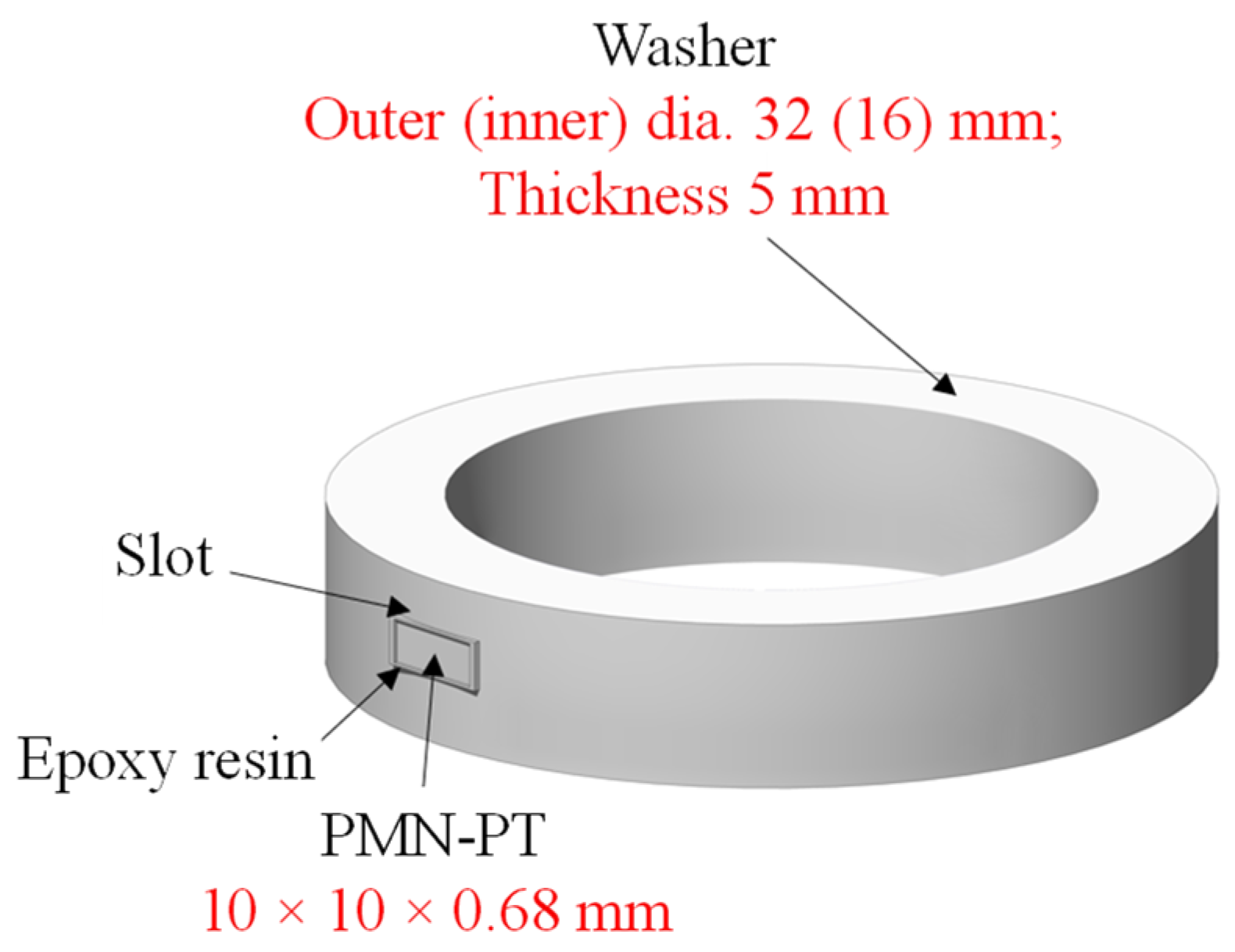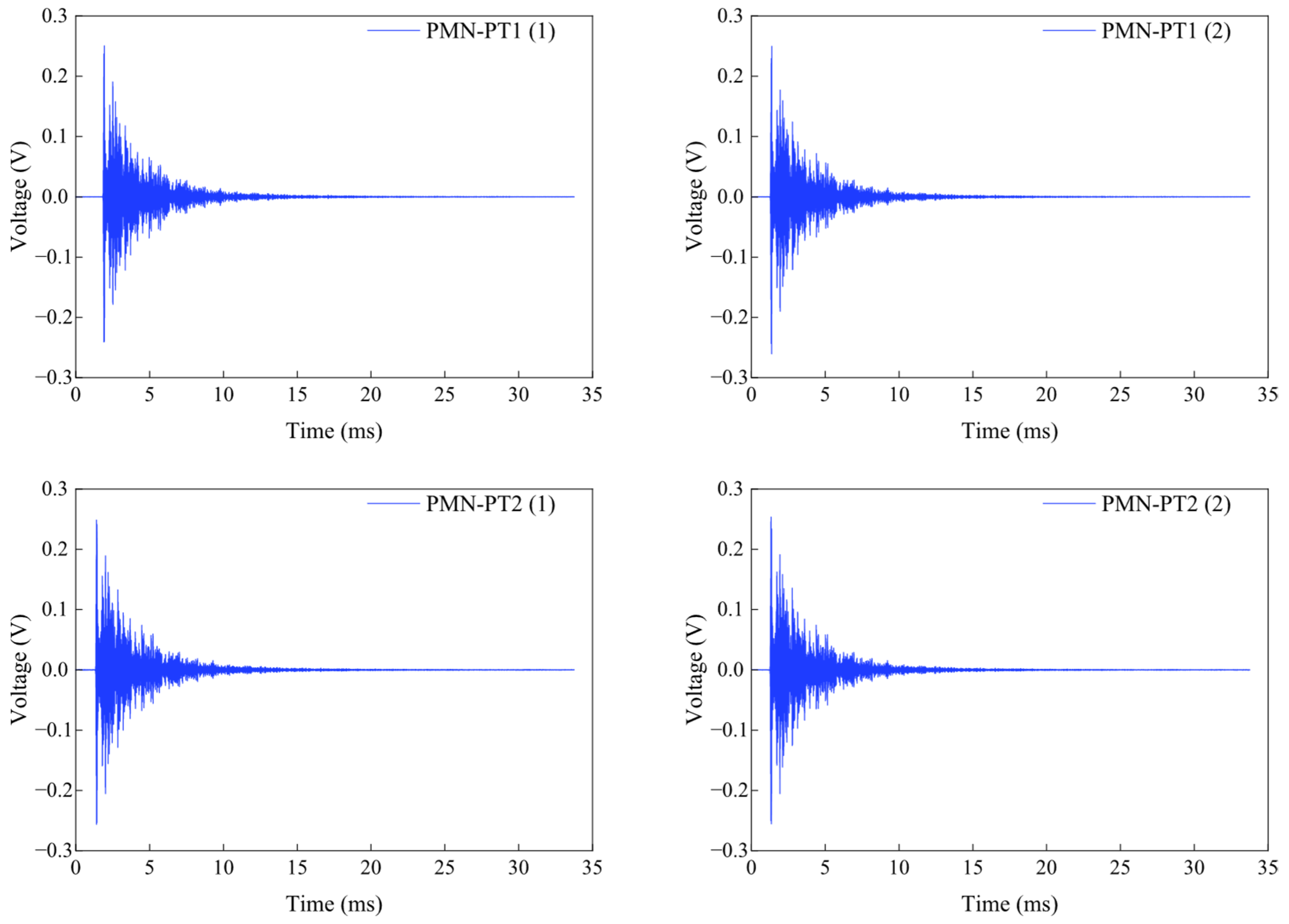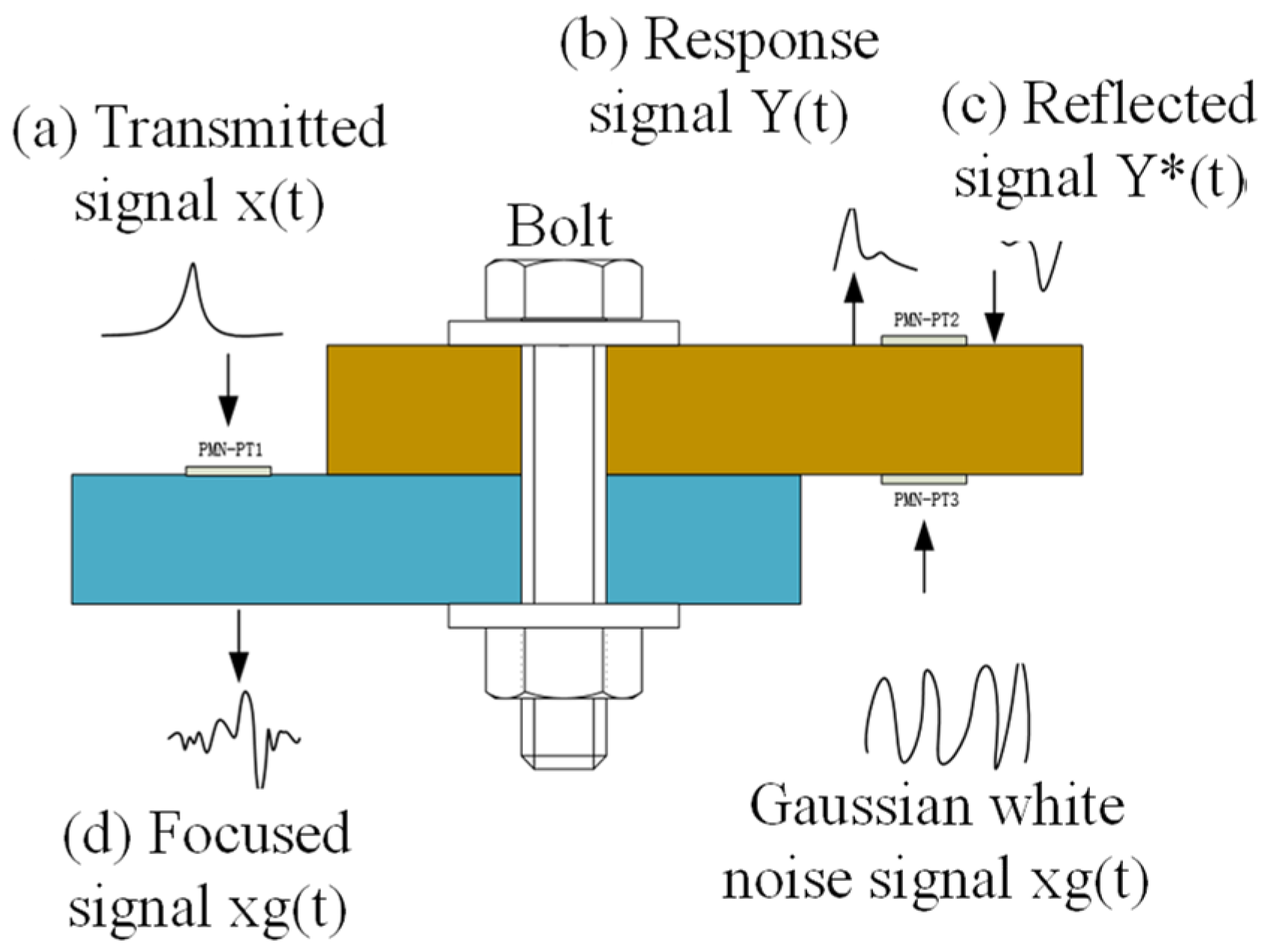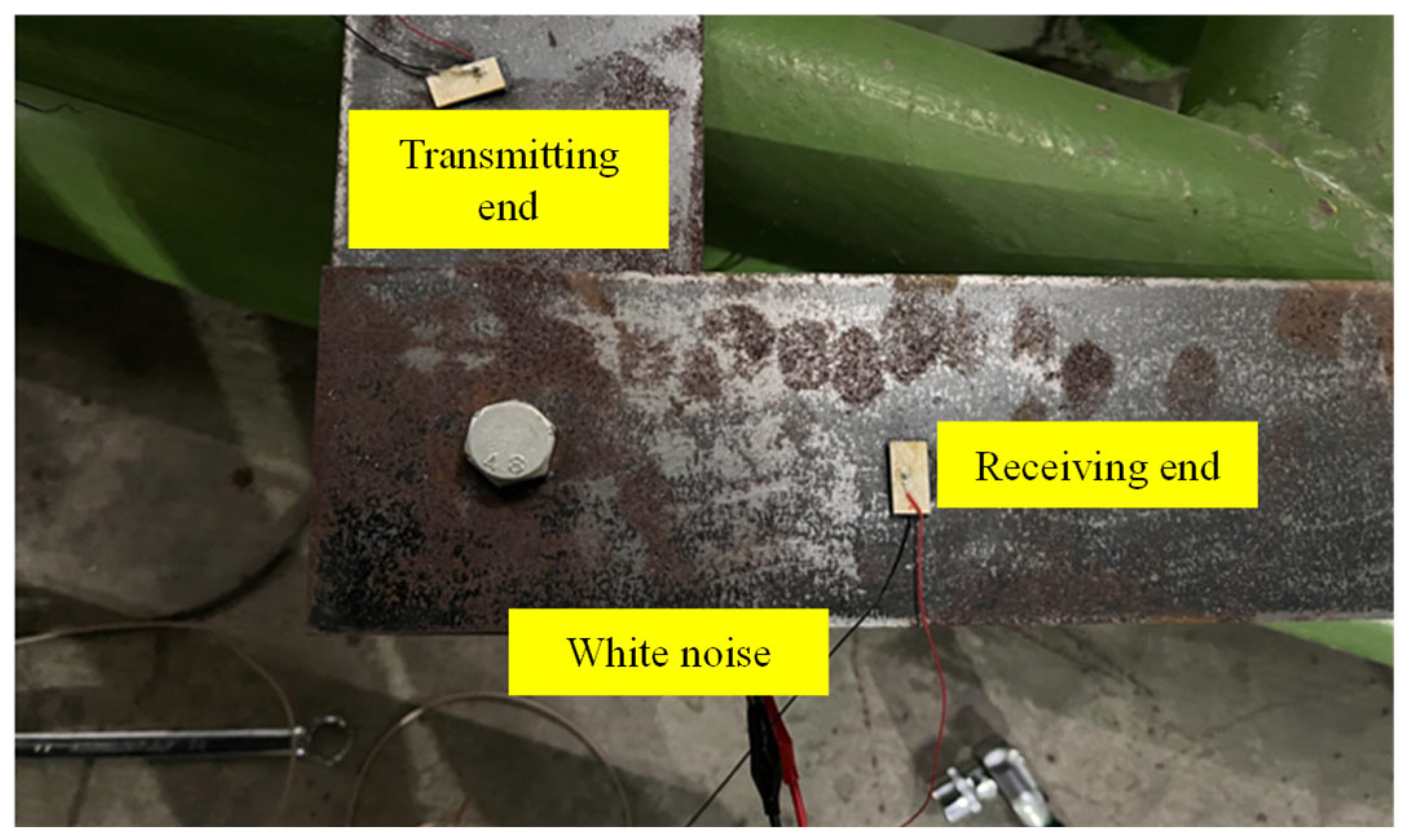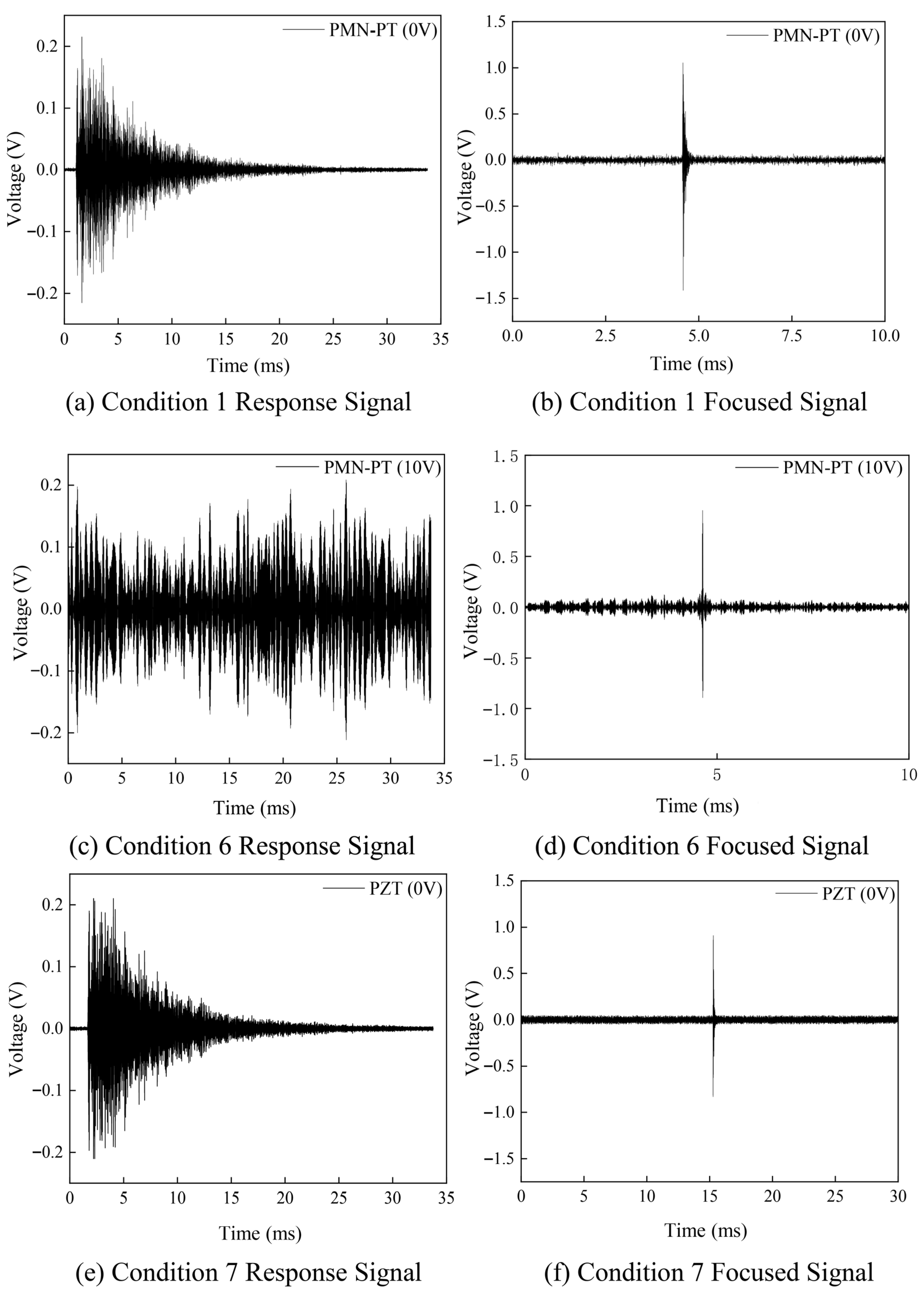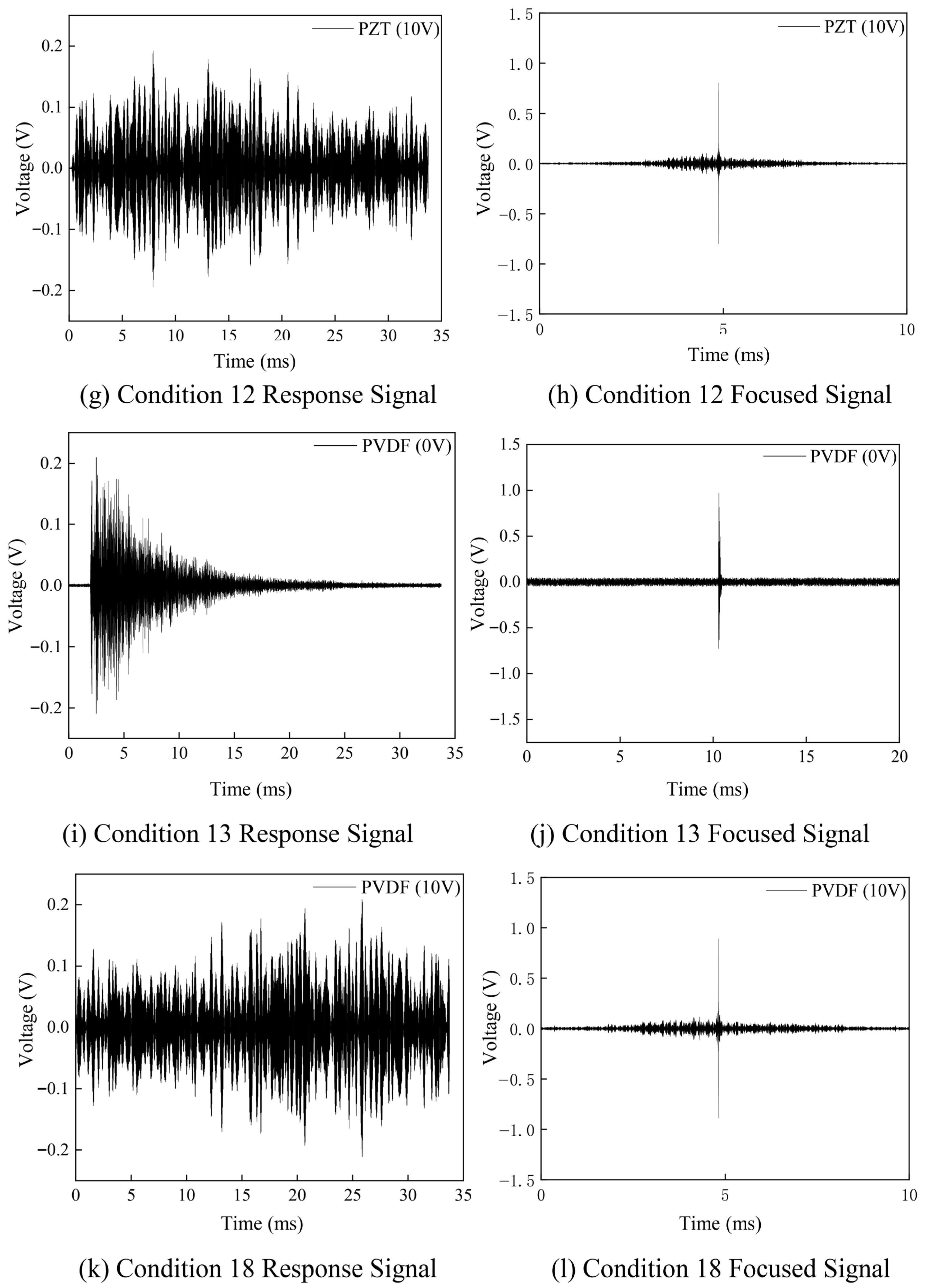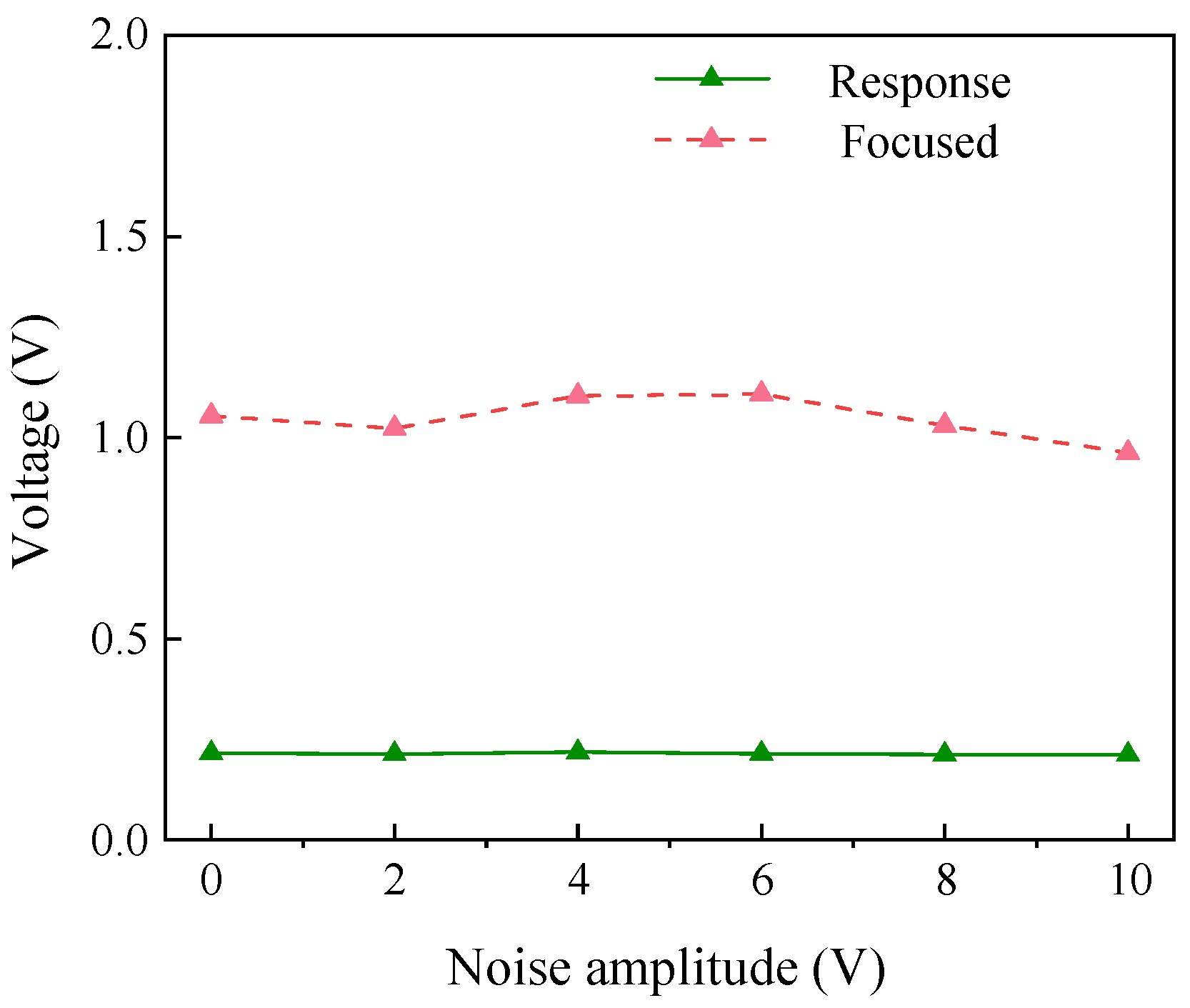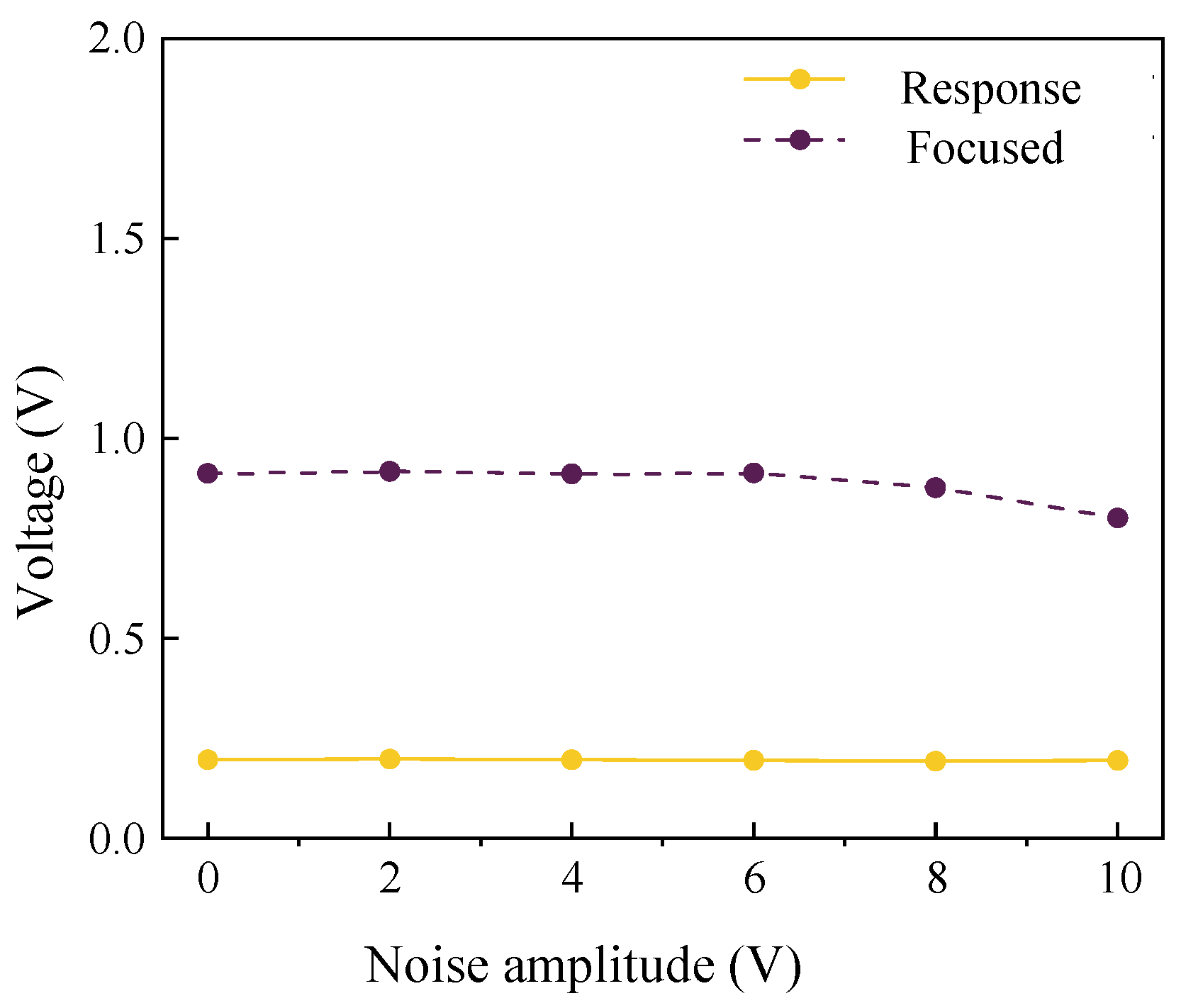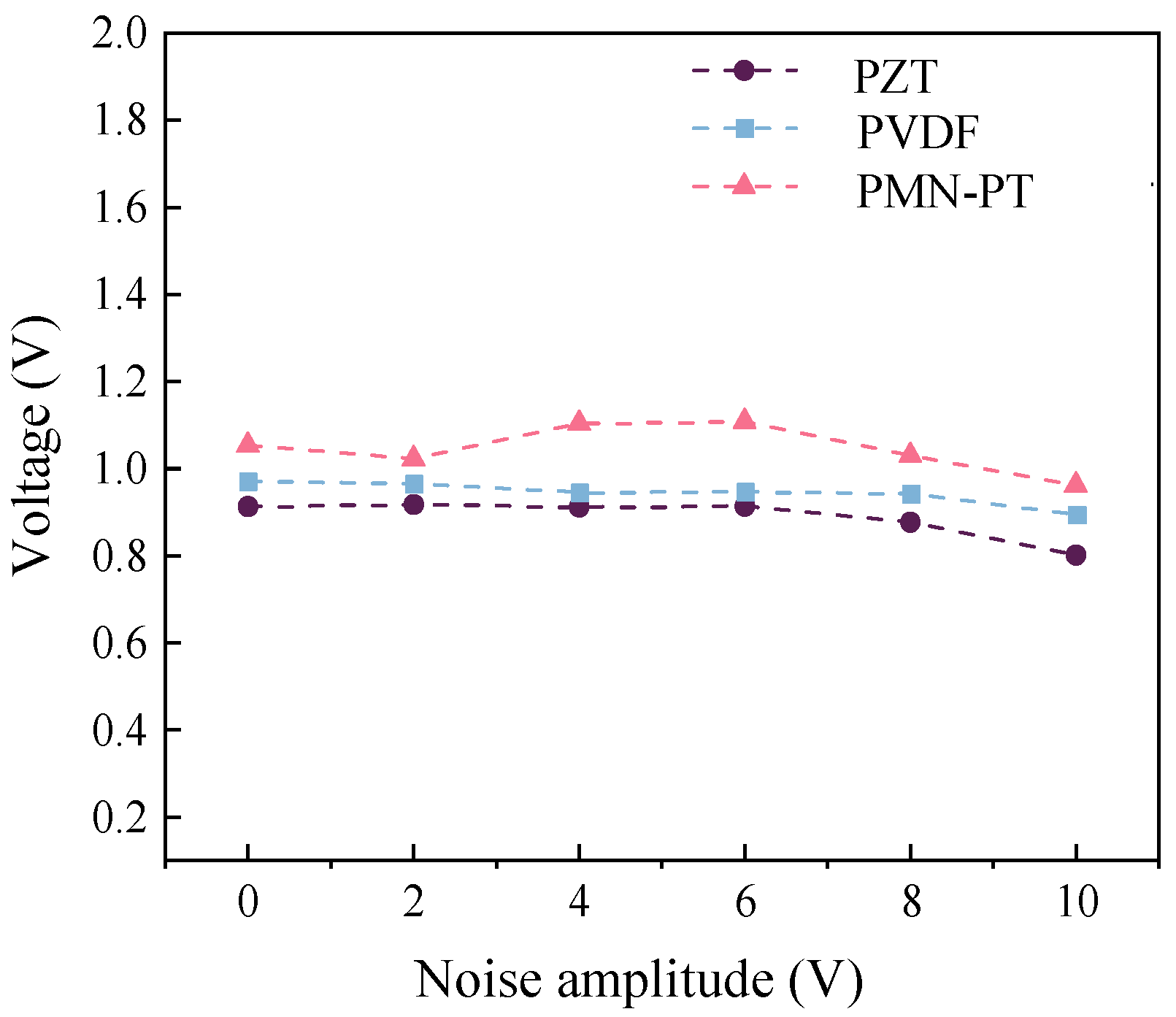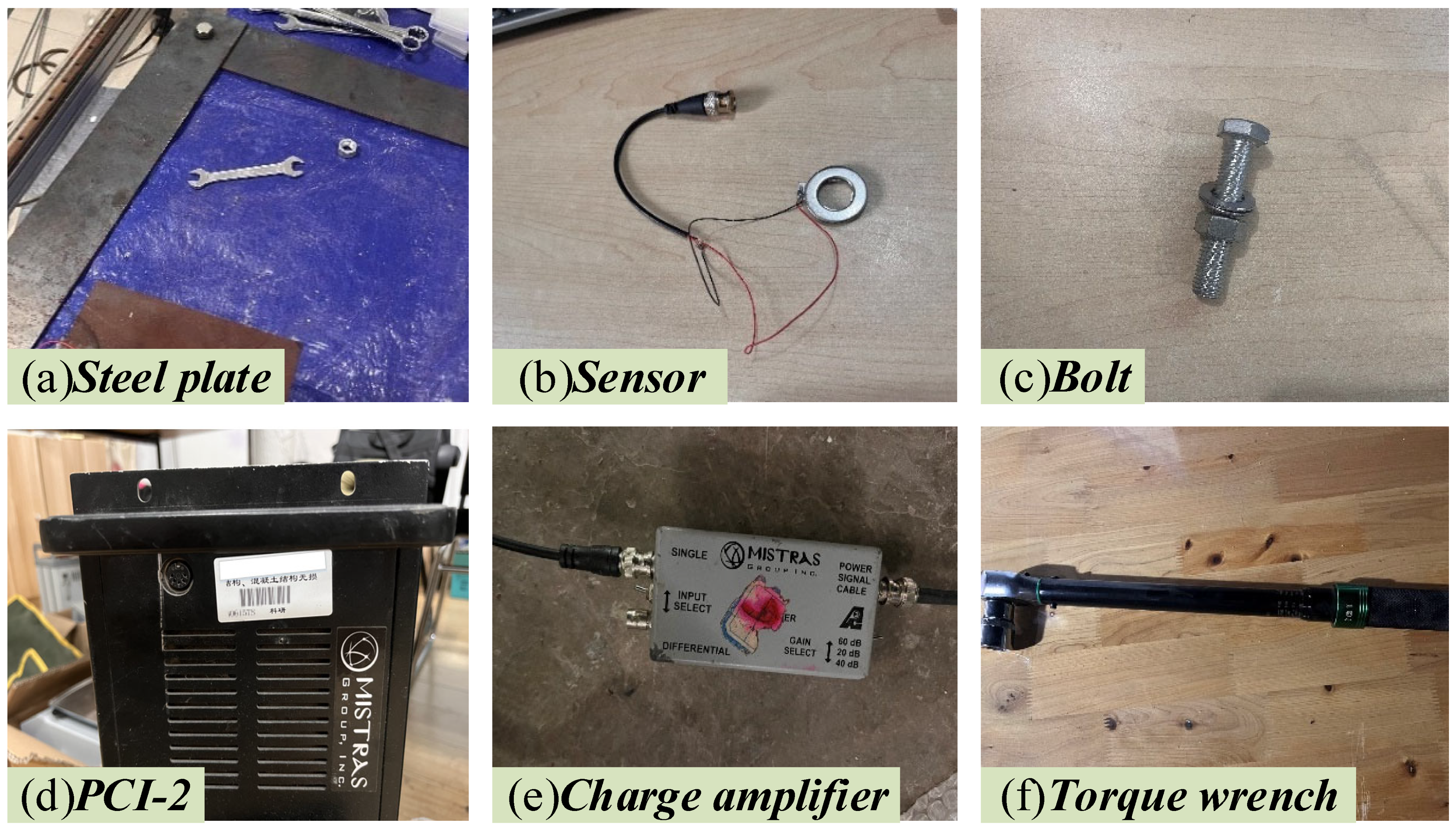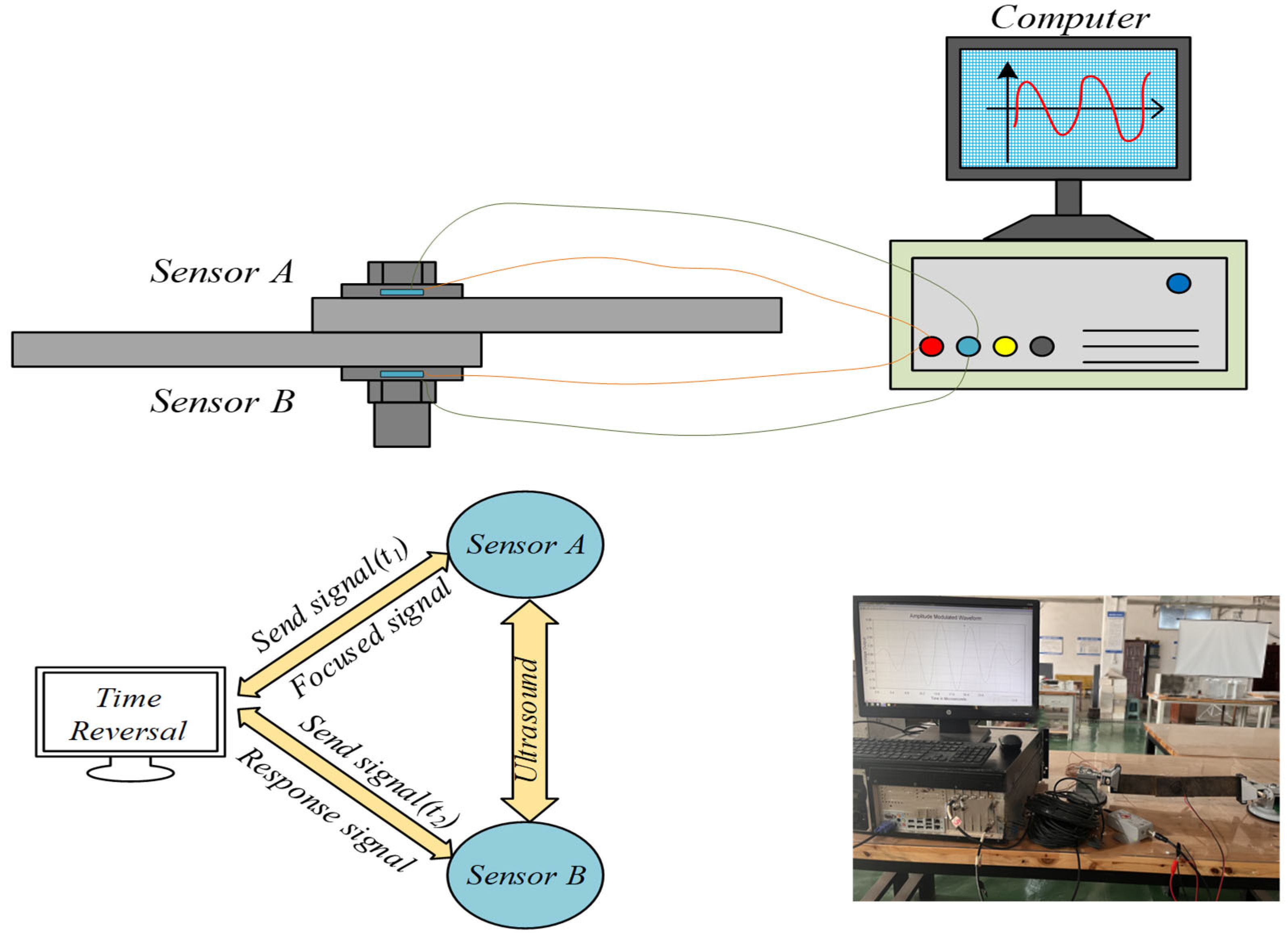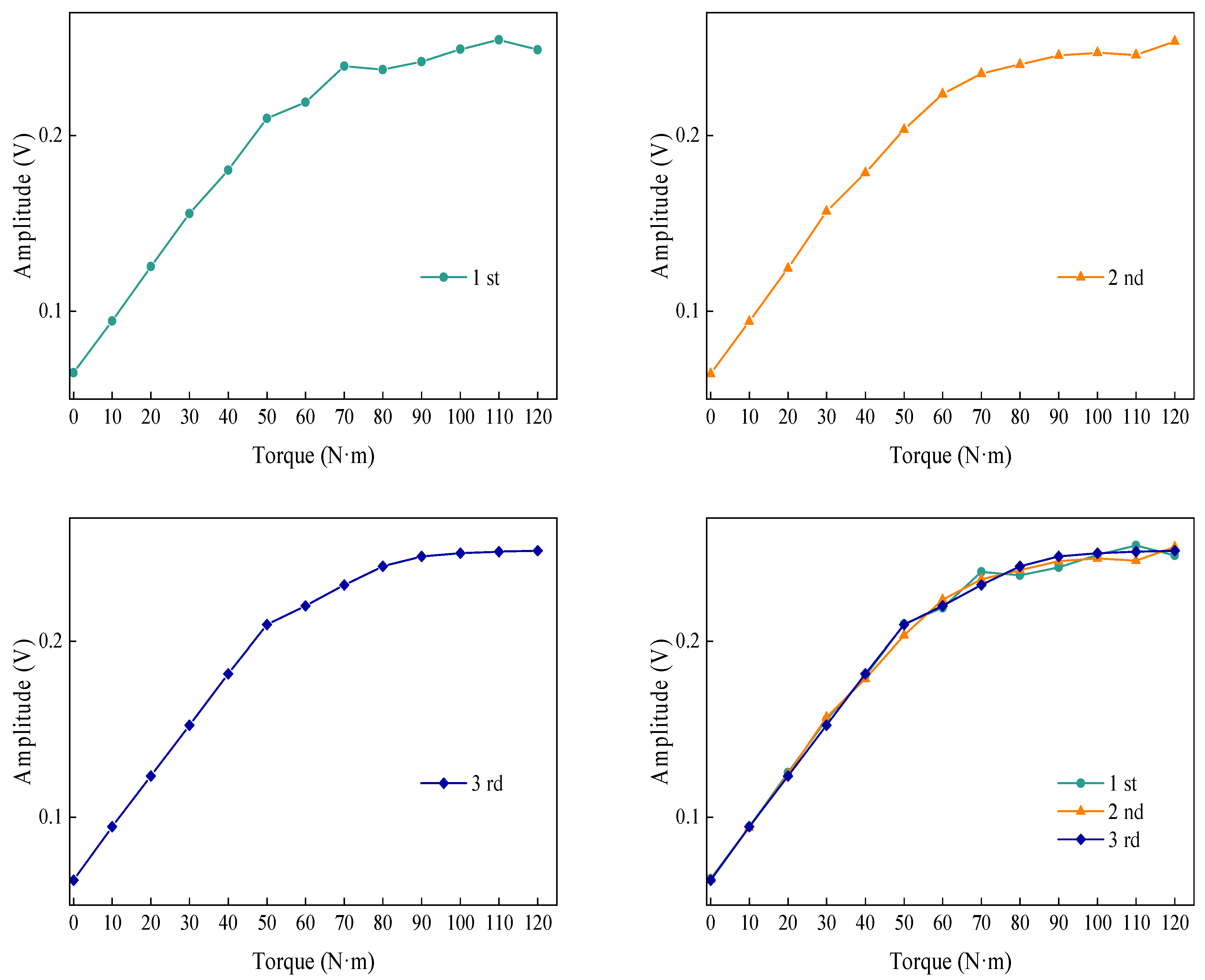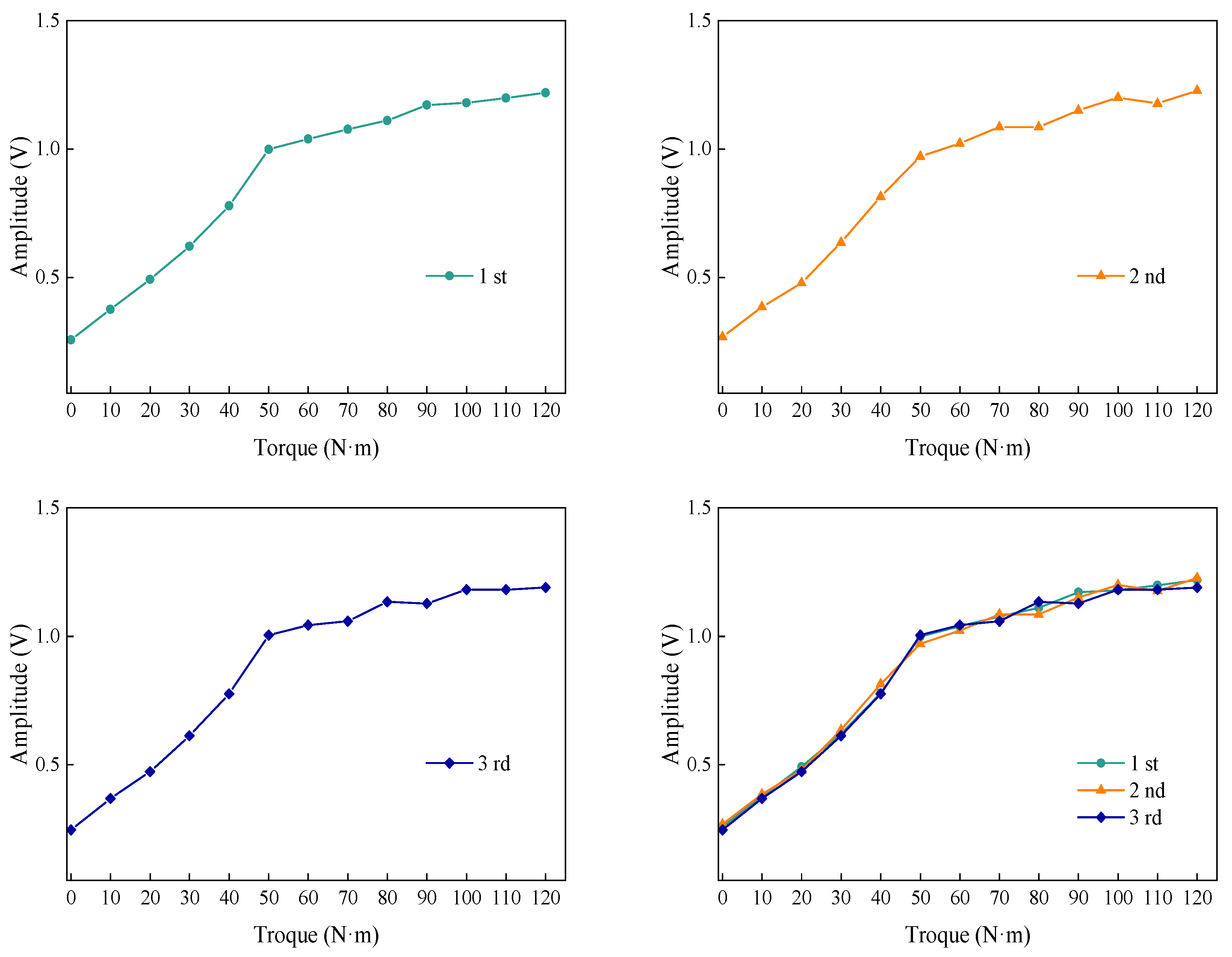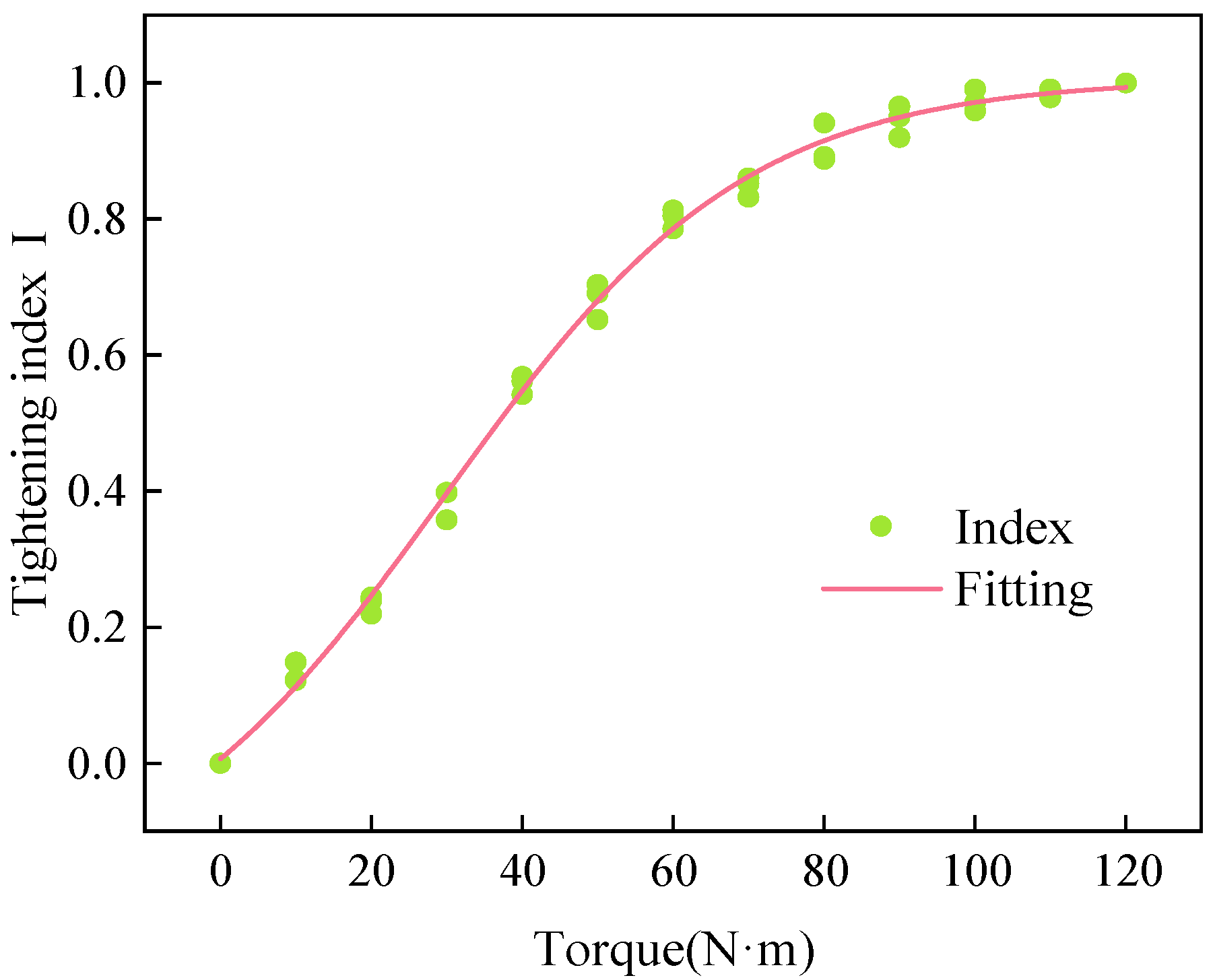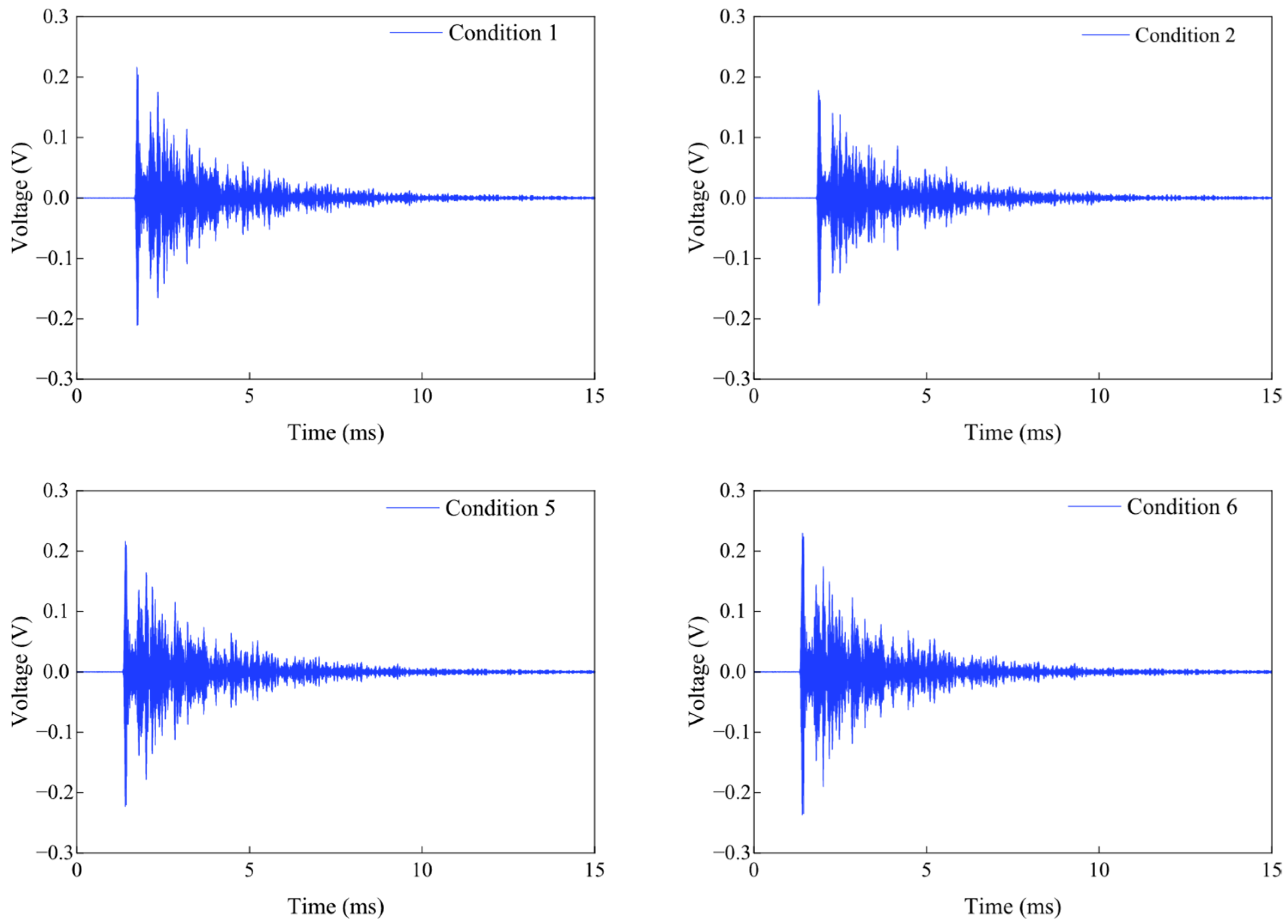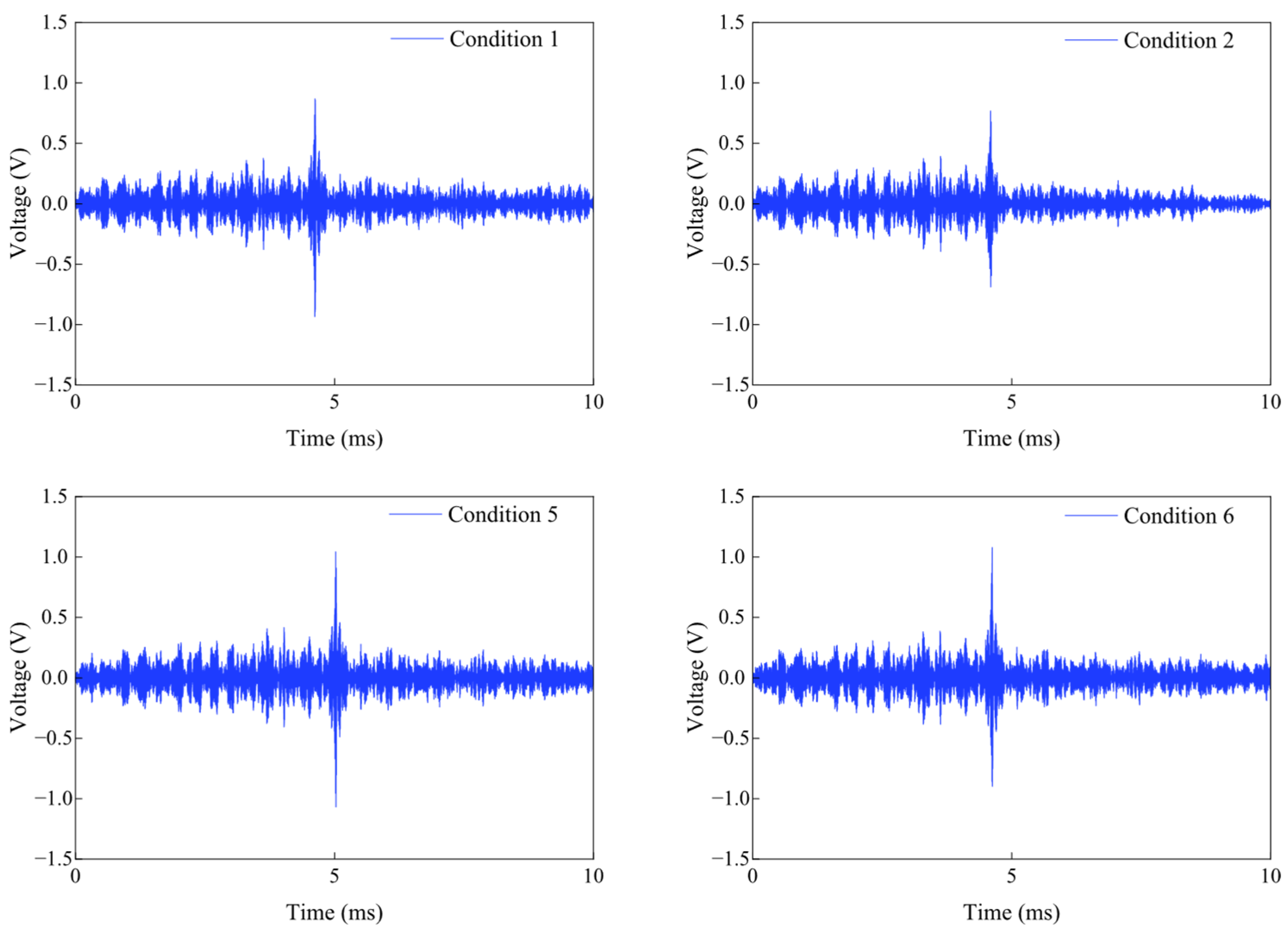1. Introduction
As critical connecting elements, high-strength bolts are widely used in large-scale steel structures such as bridges, buildings, and mechanical systems. However, under the combined effects of structural vibrations [
1,
2] and extreme weather conditions, bolts can loosen, causing component misalignment or global instability, and potentially triggering severe safety incidents [
3,
4]. Consequently, developing highly sensitive bolt-loosening monitoring technologies capable of early warning is of urgent engineering significance to safeguard critical infrastructure.
Current mainstream monitoring approaches include visual inspection [
5] and vibration-based methods [
6,
7,
8]. Visual inspection, a conventional technique, relies heavily on operator expertise and lacks both quantitative loosening assessment and real-time monitoring capabilities. Vibration-based methods primarily focus on identifying structural damage at the global level and typically detect anomalies only after significant deterioration has occurred [
9,
10]. These methods have inherent limitations, especially in achieving reliable early-stage monitoring of severely degraded bolts. In order to address micro-damage detection and timely warning needs, recent research has focused on strain-gauge-based direct preload measurement [
11]. This approach quantifies preload variations through stress–strain monitoring at bolt connections. Most existing methods determine the degree of bolt loosening by directly or indirectly observing preload levels. Common monitoring methods can be broadly categorized into direct methods and indirect methods, as summarized in
Table 1. The direct measurement method involves monitoring the stress and strain generated at bolt locations. For example, Nelson et al. [
11] summarized and proposed a direct preload measurement technique based on strain gauges. Jia et al. [
12] proposed an indirect stress evaluation method using axial stress distribution analysis at nut locations. Nevertheless, strain gauges are susceptible to installation damage and environmental instability, limiting their application to bolts under ambient-temperature tensile loads within the elastic range.
With the advancement of smart materials, increasing attention has been given to their unique sensing-response capabilities. Ren et al. [
13] developed an intelligent bolt that employs embedded fiber Bragg grating (FBG) sensors to simultaneously measure axial and shear forces. Li et al. [
14] established a thermo-sensitive model of dual-metal-layer metal-coated FBG (MFBG) and analyzed the thermal sensitivity parameters of single-metal-layer MFBG and Ni/Ni-coated MFBG. Yang et al. [
15] developed an embedded FBG sensor for bolt torque monitoring, demonstrating high reliability with an R
2 > 0.98 between applied torque and wavelength shifts. However, high implementation costs and fiber fragility restrict their deployment in extreme environments or under dynamic loading scenarios. Sidorov et al. [
16] proposed an IoT sensor node named Ten Sense M30, capable of accurately monitoring bolt joint preload. It offers secure non-line-of-sight communication over a distance of 800 m and has an expected service life of over five years. Liu et al. [
7] proposed a bolt-loosening monitoring method based on APGDF and prototype networks, which achieves optimal detection by tapping near the loosened bolt position. This method is particularly effective in scenarios with insufficient samples and noise interference, such as single-bolt and multi-bolt loosening in complex tower structures. Li et al. [
17] evaluated bolt connection faults in ring structures caused by nonlinear defects in terms of load and transfer functions. By applying harmonic excitation three times with appropriate amplitudes, they defined evaluation features based on nonlinear fault-induced load and transfer functions, ultimately establishing an effective evaluation method with sensitive local indicators for complex ring-like structures. Zhao et al. [
18] proposed a digital image correlation (DIC)-based method for bolt preload monitoring by analyzing the strain field of the bolt head surface. Artificial speckles were sprayed onto the bolt head, and images before and after deformation were captured with a camera. Using DIC, the strain field of the bolt head surface was calculated, and the linear relationship between surface strain and bolt preload was used for monitoring.
Direct measurement methods generally suffer from constraints such as limited sensor placement and low monitoring accuracy. To overcome these challenges, indirect measurement methods have been proposed by researchers worldwide. For instance, line-marking methods were among the earliest indirect techniques for bolt-loosening monitoring. Huang et al. [
19] conducted multi-mode loosening detection of threaded fasteners using both active sensing and impact methods, proposing a multimodal loosening detection approach that leverages the complementarity of ultrasonic and acoustic response signals. They introduced the concept of multi-scale cross-fuzzy entropy to map multimodal information into a unified feature space, thereby constructing more representative and effective loosening features. Redundant features were removed using linear discriminant analysis (LDA). Fu et al. [
20] proposed a method using acoustic emission (AE) sensors and deep learning, which also reduces noise by filtering corresponding frequency components. After continuous wavelet transform (CWT), one-dimensional signal data were converted into two-dimensional image data. Convolutional neural networks (CNNs) were then employed to learn these image features and classify different degrees of bolt loosening. Li et al. [
21] applied principal component and probability density analysis for diagnostic signal evaluation, successfully identifying bolt loosening levels. Coelho et al. [
22] introduced regression algorithms to quantify torque loosening levels, aimed at pattern recognition, detection, and quantification of bolt joint torque loosening.
Even when the bolt system state was unknown, this machine learning classification method effectively identified and categorized torque loss by analyzing indirect vibration measurements. The challenge of recognizing and monitoring torque loosening stems from variability and nonlinear effects present in bolt joints. Chen et al. [
23] was the first to attempt combining impact-based methods with both deep and shallow learning approaches to address the problem of underwater bolt flange loosening detection. Liang et al. [
24] proposed a one-dimensional coupled model using electromechanical impedance (EMI) techniques, exciting structures with high-frequency sweeping signals (>20 kHz). Structural damage was then evaluated by detecting changes in coupled electromechanical parameters using resistive or conductive admittance through surface-mounted sensor–actuators. Shao et al. [
25] applied the frequency shift method of piezoelectric impedance features to monitor bolt axial force, finding that sensitive high-frequency resonances mainly originated from the piezoelectric patch itself. As axial load increased, both resonance and anti-resonance frequencies showed a linear downward trend. Liao et al. [
26] proposed a novel damage index (DI) by integrating piezoelectric impedance and ultrasonic-guided waves. By combining the two sensing technologies, they eliminated disadvantages of single-sensor approaches in signal interpretation, stability, and structural adaptability, enabling identification of early bolt loosening and crack damage. Sun and Zhang [
27] developed a quantitative EMI (Q-EMI) method for measuring structural damping in bolt-loosening monitoring. This approach employed distributed thickness-shear mode piezoelectric transducers for selective excitation of vibration modes. Nguyen et al. [
28] proposed a predictive simulation strategy to comprehensively study EMI response characteristics of smart interfaces subjected to typical functional degradation. Chen et al. [
29] introduced a multi-resolution full-range bolt-tightening monitoring method using time shifts of direct and trailing waves. Based on the acoustoelastic effect and wave path summation, a theoretical model was established and a monitoring principle proposed. Tong et al. [
30] presented a bolt condition identification method based on Lamb wave propagation models and imaging techniques. Han et al. [
31] proposed an energy attenuation calibration formula for bolt preload length, addressing cylindrical guided-wave problems through ultrasonic energy attenuation. Xu et al. [
32] and Na et al. [
33] combined piezoelectric impedance techniques with neural networks to achieve effective damage identification, localization, and severity assessment, providing important references for health monitoring of bolt-sphere joints in large-span space structures. Fan et al. [
34] proposed a signal-processing method to extract modulation information from complex response signals obtained under frequency sweep excitation. A nonlinear modulation index was defined to quantify the degree of bolt loosening. Finally, Razi et al. [
35] employed an impact hammer to consistently excite systems. By striking pipelines and receiving vibrations with Piezoelectric (PZT) sensors attached to flange bolts, the signals were normalized and filtered, and empirical mode decomposition was applied to establish an effective energy-based damage index.
Perceptive materials possess the capability to sense physical or chemical changes in the external environment and are primarily used for the fabrication of sensors. Actuating materials, on the other hand, refer to those that respond to physical or chemical changes in the external environment, often being manufactured into actuators to control adverse structural responses. The characteristics of commonly used smart materials are summarized in
Table 2.
In contrast, piezoelectric materials have emerged as promising alternatives due to their high sensitivity, rapid response, cost-effectiveness, and environmental stability [
36]. In structural health monitoring (SHM), piezoelectric ceramics such as polyvinylidene fluoride (PVDF) [
37] and lead zirconate titanate (PZT) [
38] are typically fabricated into sensors or actuators for surface mounting or structural embedding [
39,
40,
41,
42]. Yang et al. [
43] divided the concrete surface into multiple regions, where PZT patches were arranged in arrays. Each array was equipped with both a driver and a sensor, and frequency sweep excitation along with various pulse signals was applied, enabling stress monitoring of concrete in different regions. Ai et al. [
44] employed raw admittance features measured from three embedded PZT sensors to extract effective structural mechanical impedance (ESMI) and structural mechanical impedance (SMI) features, which were then used for detecting impact damage in reinforced concrete structures. Pedro et al. [
45] investigated the interplay between self-sensing capabilities and the piezoelectric properties of PZT and barium titanate (BT) in aluminum components. Their study demonstrated how BT and PZT particles were incorporated into AA2017-T451 aluminum to create self-sensing materials (SSMs) that respond to external stimuli. Under cyclic loading, these SSMs exhibited a linear correlation between load and electrical response, with sensitivity increasing at lower frequencies. Pedro et al. [
46] further examined the sensorial properties of heat-treated AA7075-T651 aluminum plates embedded with PZT and BT particles via friction stir processing (FSP). The results showed that the sensitivity of AA7075-PZT was significantly higher than that of AA7075-BT, with AA7075-PZT achieving a maximum sensitivity of 15.27 × 10
−4 μV/MPa, whereas AA7075-BT exhibited only 7.28 × 10
−4 μV/MPa—52% lower. Ryan et al. [
47] focused on developing ultrasonic additive manufacturing (UAM) composites with aluminum matrices embedded with shape memory NiTi, magnetostrictive Galfenol, and electroactive PVDF phases. Their research addressed (i) electrical insulation between NiTi and Al phases for strain sensing, modeling NiTi–Al composites as tunable stiffness materials and thermally invariant structures via the shape memory effect; (ii) process development and testing of Galfenol–Al composites; and (iii) creation of PVDF–Al composites for embedded sensing applications, including the development of a PVDF–Al composite sensor. Philipp et al. [
48] evaluated the feasibility of embedding eddy current (EC) sensors for non-destructive testing (NDT) into selective laser melting (SLM) components for SHM. A robust embedding process for EC sensors was developed, ensuring sensor survivability during the harsh conditions of laser powder bed fusion (LPBF). Shao et al. [
49] developed a piezoelectric impedance frequency-shift method to estimate bolt preload, designing and manufacturing an experimental device capable of precisely controlling the axial preload of bolts for bolt-loosening detection in engineering structures. Jiang et al. [
41] quantified multi-bolt loosening by extracting nonlinear features from stress wave signals, using recurrence plots (RP), phase trajectories, and recurrence quantification analysis (RQA). Garrett et al. [
50] introduced an artificial intelligence approach employing acoustic-emission-based SHM to estimate fatigue crack length in thin metal plates. Sun and Wang [
51] applied lead magnesium niobate–lead titanate (PMN-PT) material onto the surface of concrete, subjecting specimens to both linear and impact loads. By monitoring the time-domain signal variations of the piezoelectric material, dynamic stress monitoring of concrete was achieved. Results indicated that PMN-PT exhibited superior sensing characteristics under impact loading. Duddi et al. [
42] monitored concrete Young’s modulus and crack development through passive sensing technologies, including vibration and acoustic emission (AE). Sha et al. [
52] developed an embedded intelligent piezoelectric sensor specifically for SHM of concrete structures.
Linear ultrasonic energy dissipation and time-of-flight delay effects derived from piezoelectric ceramic sensors have been widely applied for bolt-loosening detection [
53]. Wang et al. [
54,
55] identified limitations in early-stage detection using ultrasonic propagation across bolted interfaces, noting that energy dissipation stabilizes once preload surpasses critical thresholds. However, environmental interference significantly undermines ultrasonic-based methods, as external noise disrupts wave propagation and hinders practical implementation. To address this, Fink’s time-reversal technique (1998) [
56,
57] enables phase compensation and signal-energy focusing, yielding noise-immune signal reconstruction. While extensively applied for enhancing structural damage detection [
58,
59], its application to high-strength bolt-loosening monitoring remains underexplored. From the research outcomes, it can be observed that ultrasonic techniques possess advantages such as a wide frequency response range, low energy consumption, and broad propagation distance, making them widely used in metal and composite material detection [
60]. However, they also suffer from shortcomings, including frequency sensitivity, susceptibility to noise interference, and severe scattering in concrete structures. The impedance method has been widely applied for real-time monitoring of localized damage and enables effective damage localization. Nonetheless, its strict frequency requirements limit it to local and surface monitoring, and its accuracy for detecting internal structural damage still requires improvement. Passive monitoring methods that leverage the direct piezoelectric effect can effectively reduce monitoring costs and are commonly employed for overall structural damage detection. However, for localized monitoring, passive approaches still demand further research.
From the perspective of prior research and the characteristics of PMN-PT single-crystal materials, most existing studies have employed traditional PZT ceramics (d
33~600 pC/N) or resistive strain gauges as sensing elements. This study is pioneering in its use of PMN-PT single-crystal material (d
33 > 2000 pC/N), whose piezoelectric constant is more than four times higher than that of PZT. Benefiting from the ultra-high piezoelectric performance of PMN-PT, sensors fabricated with this material achieve superior sensitivity and signal-to-noise ratio. This work presents a novel surface-mounted piezoelectric sensor based on PMN-PT single-crystal material, composed of a PMN-PT sheet, an integral washer, an epoxy encapsulation layer, and shielded wiring. Compared with conventional piezoelectric sensors, PMN-PT single crystals offer outstanding advantages in piezoelectric coefficients, energy density, and low-frequency sensitivity [
61]. A series of fundamental performance tests and actuation experiments collectively verify the feasibility of the sensor for bolt preload monitoring. Furthermore, preload experiments incorporating the time-reversal (TR) algorithm demonstrate effective suppression of environmental noise through signal-energy focusing. Finally, a fastening index derived from the focused signal is proposed, enabling high-precision evaluation of bolt-loosening states. The application of the new PMN-PT material to bolt-loosening monitoring, owing to its excellent sensitivity and signal-to-noise performance, holds critical significance for enabling early warning and predictive maintenance of bolted connections.

